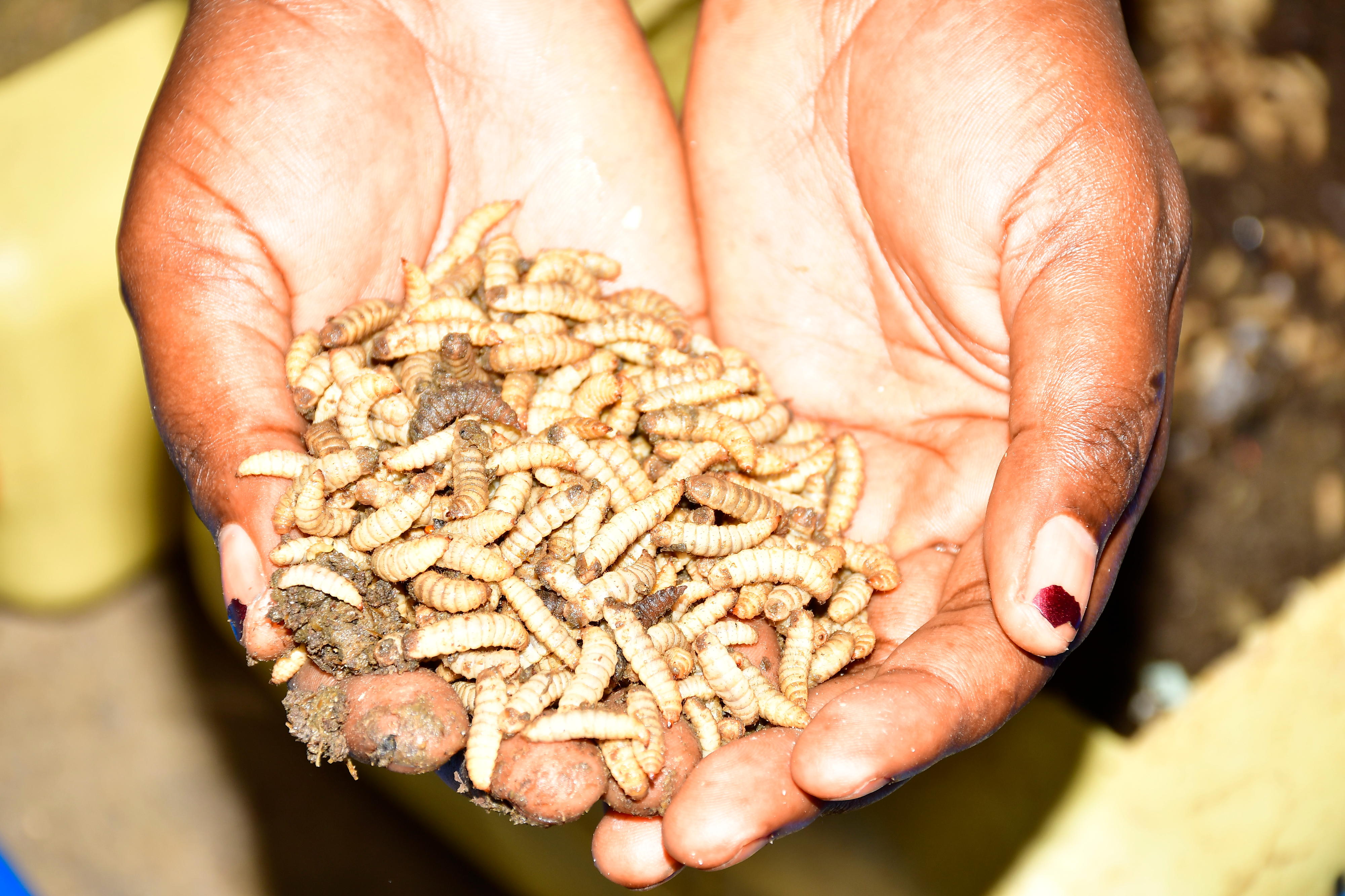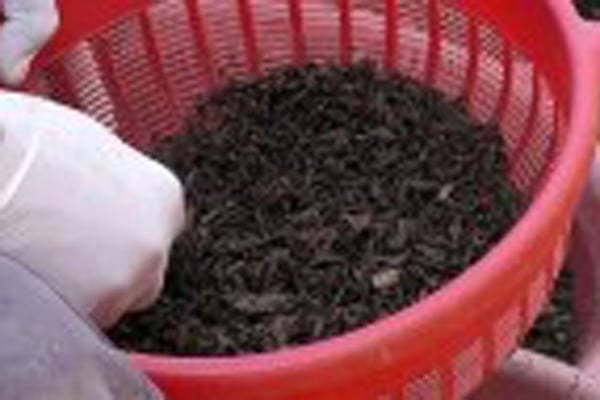Black soldier flies are my cash cow

Deborah Amulen displays some of the maggot-like-larvae.Photo/Stephen Otage
What you need to know:
- Once the larvae are at the fifth developmental stage, they are harvested and dried. During sorting, 80 percent of the larvae is harvested and ready for processing, while the 20 percent goes back into the colony to turn into pupae and then transform into flies, which then produce more eggs.
Traditionally, maize bran, silver fish, vegetables, grass, kitchen waste and a selected number of tubers, have been the major source of materials for production of livestock feeds.
Although it is common knowledge that animals, birds and fish feed on insects such as earthworms, crickets and others that grow naturally in the environment, farmers and livestock-feed producers, have not paid keen attention to large scale production of such insects to diversify the sources of feed.
The black soldier fly itself may be rarely seen publicly compared to the common housefly, but a search under any rotting material at any time, will expose its maggot-like-larvae, breaking down the rotting material.
Maggot-like-larvae
It is the maggot-like-larvae that has led to the emergence of large scale black soldier flies farmers such as Talash Buijbers and farms such as Mana Bio systems both in Kenya, whose profiles are readily available on the internet.
In Kampala, Marula Proteen Ltd in Wankoko in Bugoolobi and the Centre for Insect Research & Development (CIRD) in Kawanda on Kampala-Gulu Highway, are the biggest farms that have taken on large scale black soldier fly rearing in Uganda.
When they started
Tommie Hoof, the chief executive officer and founder of Marula Proteen, says in 2020, they established the breeding centre at a warehouse in Wankoko near Bugoolobi. It is here that they get the larvae which is dried and milled to make animal feeds and eggs which they sell to farmers at Shs2,700 per kilogramme, to start their own farms so that they can increase the number of farmers breeding the flies.
“Right now, the feeds are completely sold out. We dry the larvae and mill it to make animal feeds. Animals prefer the feeds because of the fat content. We sell full-fat meal at Shs4,000 a kilogramme and de-fatted one at Shs4,500 a kilogramme. We also make organic fertiliser that we sell at Shs800 a kilogramme,” says Hoof.
Big demand
He says besides failing to satisfy the demand for animal feeds, they are also failing to satisfy the demand for fertilisers from coffee, horticulture and avocado farmers who require them in tonnes per week. As a result, they are planning to expand to Jinja and the Rwenzori region.
He adds that if anyone has a poultry slaughter house, they would be ready to set up a system near such a facility because the waste from the slaughterhouse, provides very good breeding and feeding materials for the eggs and the larvae.
The genesis
The whole story behind this magical fly, can only be well explained northwards of Kampala at CIRD found in Kawanda on the Kampala Gulu Highway, a community development initiative through insect resources established by Dr Deborah Ruth Amulen in 2021 after her PhD studies. Following her passion for insects, CIRD is an initiative she does besides her lecturing job at Makerere University.
The black soldier fly was one of the key insects of choice because of the varied benefits, ranging from income generation to mitigation of environmental pollution.
First, she says one can get income from selling its dry larvae to feed pigs, poultry and fish. Second, it can also make pet food, thirdly the by-product is very good organic because it is very rich in NPK, and its value chain has a lot of employment opportunities.
“We are employing women in Kiteezi to sort restaurant waste food which we buy at Shs200 per kilogramme, you can employee people whose work is just collecting eggs, those whose work is to hatch the eggs and feed the larvae, those who manufacture the equipment, those who make the livestock feeds from BSF,” she says.
Group farming
She explains that with a network of 310 farmers currently, the centre does all the services including breeding the insects, manufacturing the nets, training the farmers, troubleshooting whenever they have problems.
BSF farming is simple technology for even the uneducated and cheap to start especially where organic waste is readily available.
How to trap eggs
To trap the eggs, she says the farmer has to mimic the fly behaviour. “You get a bowl, place an attractant like rotting bananas, pig manure and on top of that container place egg collection timbers. Ensure it’s in a dry place and near a rubbish dumping site. In four to five days you will be able to observe that flies have laid eggs in the dry cavities between the egg collection timbers. You can then collect this eggs, introduce them into an organic substrate like food waste and in three to four days they will hatch to neonates (larva or maggots). These can then be fed for 7 to 14 days and you harvest for livestock feed. BSF needs very good care,” she says.
She emphasises that the feeding of the larvae at this stage should be carefully handled because it will determine the size and quality of the larvae which is very sensitive to food quality for example salty or soapy food at this stage.
The money
Asked how one can make money from BSF farming, she said a farmer can make money through sale of BSF eggs which on average a gramme is sold at Shs10,000. “One gramme of eggs can hatch between three to four kilogrammes of BSF fresh larvae which can be sold at Shs3,500 per kilogramme. Dry larva can be sold at Shs4,000 per kilogramme depending on how much someone utilised for mobilisation of waste,” says Dr Amulen.
A farmer can also sell pupae at an average price of Shs15,000 per kilogramme but ensure you feed them well for increased hatchability. “In-terms of inputs to the business, we buy maize bran per kilogramme at Shs1,500, brewers waste at Shs140 per kilogramme and restaurant food waste at Shs200 per kilogramme. To produce two kilogrammes of larvae, one needs to feed the larvae an average of three kilogrammes of the food waste and brewers waste on a ratio of 2:1,” says Dr Amulen.




